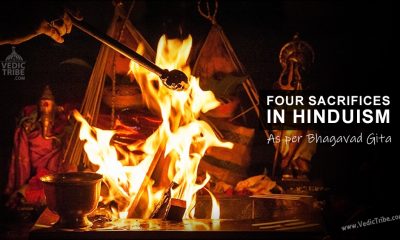History
Ghadar Movement – When NRIs fought for India’s Independence
Published
5 years agoon
By
Vedic Tribe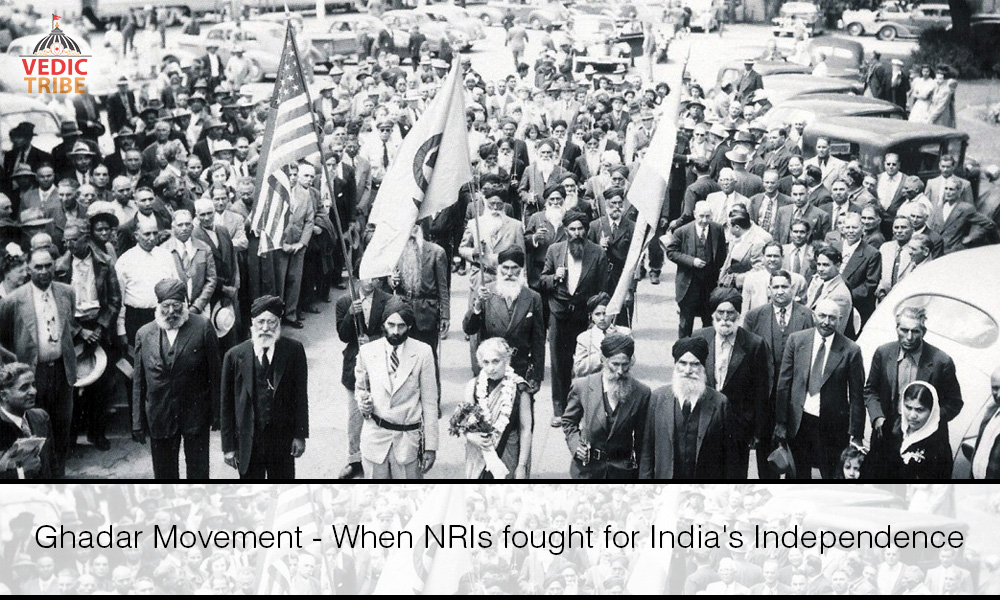
~ By Inder Singh
India’s independence has long been attributed to Mohandas Gandhi, Congress leaders and their struggle for freedom. In the midst of their limelight, the world has forgotten many other unsung heroes who lost their lives in hopes to see India free from the clutches of British Raj. There is not a single peep about them in history books or their movements that helped create a whirlwind of nationalistic pride in the shattered people of India. This is one such story that needs to be put back in the pages of antiquity.
Gadar Movement is the saga of courage, valor and determination of overseas Indians who had come to Canada and the United States either for higher education or for economic opportunities. They imbibed the fire and zeal of revolutionaries and became the trail blazers of freedom struggle for their motherland, India. They may have lived ordinary lives but they left an extra-ordinary legacy.
At the dawn of the twentieth century, both India and Canada were British dominions, so, Indians had easier access to emigrate to Canada. The new immigrants were hard working and accepted lower wages, so some Canadian companies publicized the economic and job opportunities available in Canada to seek more cheap labor from India. During the first few years, every year about 2000 immigrants, mostly Punjabi farmers and laborers were permitted to come. As the number of immigrants increased, the locals felt threatened by labor competition from the hardy and adventurous Punjabis. Fear of labor competition led to racial antagonism and demands for exclusionary laws from cheap foreign Asian workers. In 1909, severe immigration restrictions virtually ended legal Indian immigration to Canada.
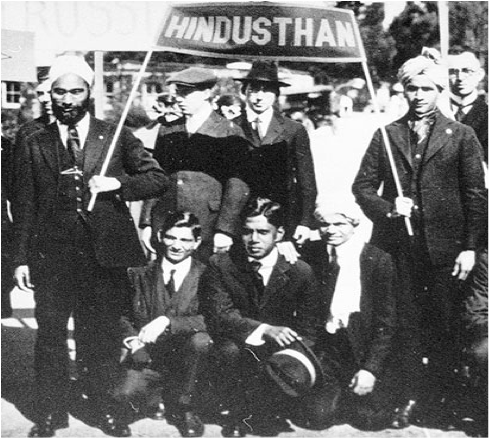
UC Berkeley students of the Ghadar movement (via Asian American Writer’s Workshop)
When Indian immigrants saw the doors closing on them in Canada, they started coming to the United States which needed more people to do hard labor work to build new communities. In the U.S, they faced many difficulties, suffered numerous hardships and encountered rampant discrimination. Initially, they could find only menial jobs, but over a period of time and with their hard work and determination, many of them became successful farmers with their own land.
Within a span of few years, number of immigrant workers had swelled, so they starting facing widespread hostility which led to racial riots, resulting in certain cases, a loss of life and property. Like Canada, the United States, which had initially welcomed the Asian labor to do menial jobs, enacted Asian exclusionary laws to bar Asians emigrating to the United States.
For discriminatory treatment and damages in race riots, the Japanese and Chinese governments sympathized with their overseas nationals and negotiated with the American government for compensation for life and property losses. But the British Indian Government would not make any representation to the U.S. Government for similar losses. Indians soon realized the difference between the citizens of a “slave” country and those ruled by their own people.
The United States had also welcomed qualified Indian students seeking admissions in the American universities. However, upon graduation, they were not able to get jobs commensurate with their qualifications. The discriminatory practices were against the very ideals of liberty and freedom they had seen in their University environment. The Indian students attributed the racial prejudice and discrimination to their being nationals of a subjugated country. They were motivated to get rid of the foreign rule in India and were determined to fight for freedom for their motherland. They also started fostering feelings of patriotism and nationalism among their fellow Indian Immigrants.
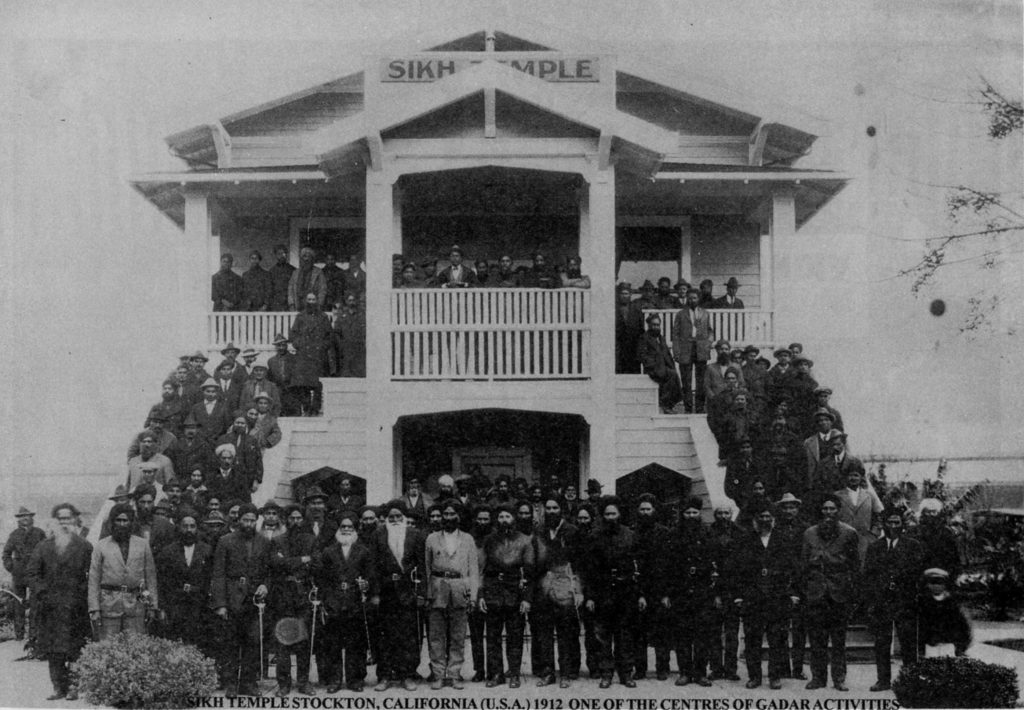
1916 – Ghadar Party members assemble at Stockton gurdwara Image: DAWN/Wikimedia
Many Indians and particularly Indian students in the USA, Canada, England, Germany, and France, started advocating freedom for their motherland, India from British serfdom. They formed organizations or groups for India’s freedom. Taraknath Das, a student, started publishing a magazine Free Hindustan in 1907 in Seattle, advocating armed rebellion against the British rule in India and also formed “East India Association” in 1911; G. D. Kumar started a Punjabi paper Swadesh Sewak in Vancouver while Shymji Krishna Varma founded Indian Home Rule Society in London.
In the United States, Har Dyal who had come from England after relinquishing his scholarship and studies at Oxford University was identified with nationalist activities. He inspired many students studying at the University of California at Berkeley. Two of his many student followers, Katar Singh Sarabha and Vishnu Govind Pingle later on played very prominent role in the Gadar movement. Dyal’s fervor for India’s freedom spread beyond the university campuses. A meeting of some patriotic and enlightened Indians was called on April 23, 1913, in Astoria, Oregon, where Har Dyal, Bhai Parmanand and others passionately spoke for throwing the British out of India. It was at this meeting that Hindustan Association of the Pacific Coast was formed with a major objective to liberate India with the force of arms from British colonialism, just as Americans had done more than a century ago, and help establish a free and independent India with equal rights for all. Sohan Singh Bhakna was elected President, Hardayal, General Secretary, and Pandit Kanshi Ram Mardauli, Treasurer. Lala Har Dayal who had been a faculty member at Stanford University for about two years, was the central figure and the force behind the newly formed organization.

Left: A page from the book British Terror in India, published by Hindustan Gadar Party in 1920. Source: Twitter.
Right: Ghadar Party advertisement for new members. Source: Wikipedia
The headquarters of Hindustan Association of the Pacific Coast was established in San Francisco, which served as a base for coordination of all the activities of the association. A building was purchased with funds raised from the community, primarily Punjabi farmers and farm and lumber mill workers and was named Yugantar Ashram. The association began publishing a magazine, Gadar, for free distribution to promote the aims, objectives and activities of the organization. Gadar, literally means revolt or mutiny, was published in Urdu, Hindi, Punjabi, among other languages. “The first issue of the journal Gadar was in Urdu and was published on November 1, 1913. An edition of the journal was brought out next month in Gurmukhi and in May 1914 a Gujrati edition of the journal was also published.” Says Anil Ganguly in his book “Ghadar Revolution in America.”
The Gadar publication exposed the British imperialism and called upon the Indian people to unite and rise up against British rule and throw the British out of India.
It carried articles on the conditions of the people of India under British Rule and also on problems of racial attacks and discrimination against Indians in the USA and Canada. The publication Gadar, over a period of time, became well known among Indians and the Hindustan Association of the Pacific Coast itself became known as the Gadar party. Besides Gadar, the group brought out various publications to raise the consciousness of the Indian people to revolt against the British. Special issues of Gadar were also printed in Nepali, Bengali, Pashto, Gujrati, as well as in many other languages.
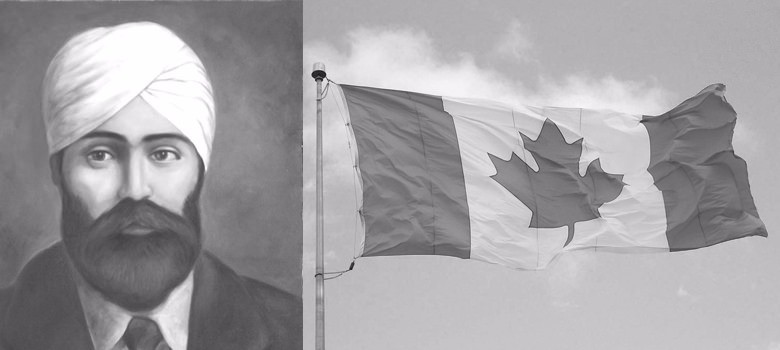
Mewa Singh, a young Sikh man who emigrated to Canada from India in 1906. He was involved in the Ghadar Party movement seeking Indian independence from British rule.
Gadar literature was sent to Indian revolutionaries in India, Europe, Canada, Singapore, The Philippines, Hong Kong, China, Malysia, Singapore, Burma, Egypt, Turkey, and Afghanistan. In a short period of time, publications from the Yugantar Asram, particularly the Gadar magazine became very popular. The British government got alarmed and used every means to stop the circulation of Gadar and other such publications, particularly in India. The magazine, being the principal patriotic literature, reached many people; even if one copy reached India or to a fellow revolutionary elsewhere, multiple copies were made for circulation.
Hindustan Association was barely a few months old when under pressure from the British Indian Government, Har Dyal was arrested by the U.S. Government. He was released on bail on March 24, 1914 but soon left for Switzerland and then to Germany. The sudden departure of Har Dyal did create some vacuum in the organizational structure of the association but it did not cause the death of the organization. The seed of revolt that Har Dyal sowed, had developed into a formidable organization. Many committed and dynamic volunteers continued to work tirelessly and pursued the planned activities of the association.
In Germany, Har Dyal continued to promote his mission, independence for India. He knew that Germans had great sympathy with the Gadar movement because they and Gadarites had common enemy, the British. Har Dyal, along with Virendra Nath Chattopadhyay, younger brother of politician-poetess Sarojani Naidu, Barkatullah, Bhupendra Nath Datta, brother of Swami Vivekananda, Ajit Singh, Champak Raman Pillai, Tarak Nath Das, and Bhai Bhagwan Singh formed Berlin Indian Committee in September 1914, also known as the Indian Revolutionary Society. The objectives of the society were to arrange financial assistance from German Government for revolutionary activities and propaganda work in different countries of the world, plan training of volunteer force of Indian fighters and arrange transportation of arms and ammunitions to reach the Gadarites for a revolt against the British Government in India.
![The United States of India (February 1924) published by Pacific Coast Hindustani Association [via SAADA]](https://vedictribe.com/wp-content/uploads/2020/11/1_eHcAZE_clFFmA6D5kgfQ0Q.jpg)
The United States of India (February 1924) published by Pacific Coast Hindustani Association [via SAADA]
Besides Germany, the gadarites also sought help from anti-British governments. In December 1915, they established a Free Hindustan government-in-exile in Kabul, Afghanistan, with Raja Mohinder Pratap as President, Maulavi Barkatullah as Prime Minister and Champakaran Pillai as Foreign Minister. The government-in-exile tried to establish diplomatic relationships with countries opposed to the British in World war l such as Turkey, Germany, Japan, etc. The gadarites also established contact with the Indian troops at Hong Kong, Singapore, and in some other countries and hoped for their participation in the uprising against the British.
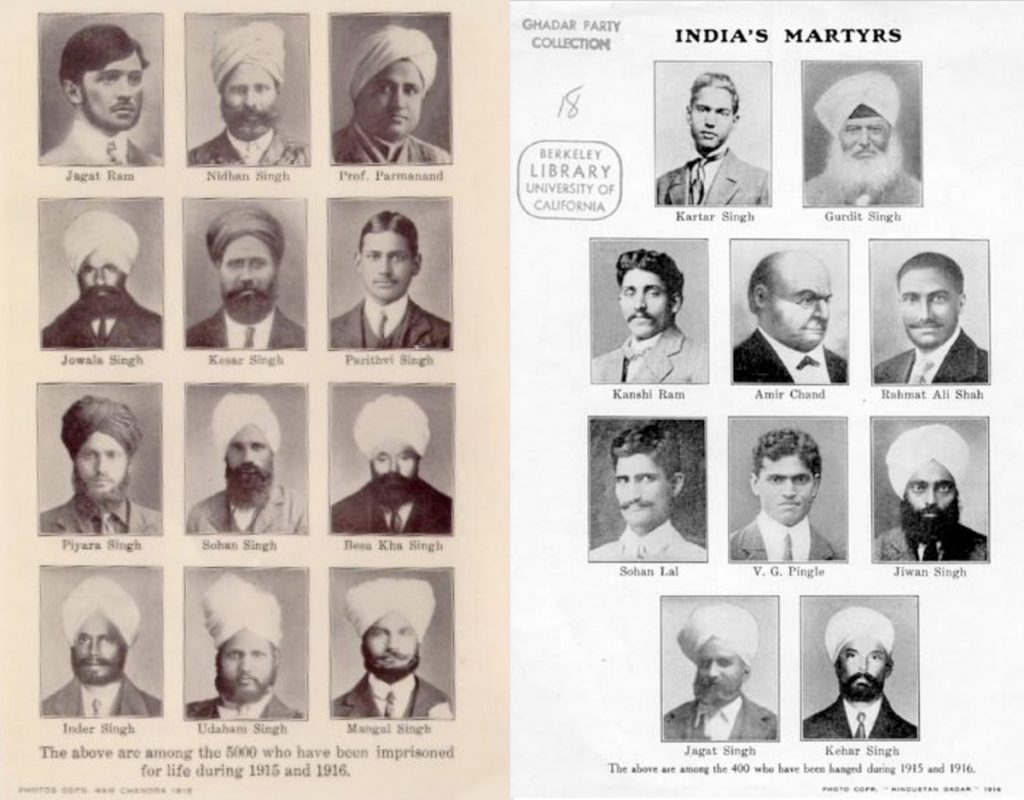
Gadhar Party Members and Martyrs
The British Government tried to suppress the Gadar Movement and had hired agents to penetrate the Gadar party almost from the beginning. Har Dyal used the columns of Gadar to caution his compatriots against British spies. The traitors of the Gadar movement leaked out the secret plan to the British spies. As a result, the ships carrying arms and ammunitions never reached India. Germany was originally planning to send more ships carrying arms and ammunition to India, lost interest in the venture after seeing the fate of original vessels. Many gadarites and volunteer fighters were taken captives upon reaching India. Some of the active gadarites who escaped arrests, including Kartar Singh Sarabha and Vishnu Govind Pingle, made alliance with Ras Behari Bose and other known revolutionaries in India. They had come to India to overthrow the British rule and wanted to unite and work with all those forces that were working to liberate India. They tried hard to mobilize the people and infiltrate into various units of the armed forces. But the British spies out maneuvered them. They also could not get the support of Mahatma Gandhi and other leaders of India’s Freedom movement, who had already committed full co-operation with the British Indian Government.
Before leaving for India, the Gadarites were given the impression that India was ready for a revolution. So, when the World War l provided a golden opportunity for them to attain their goal, they hurried homeward for revolution. What an irony; while the gadarites had gone to India to fight willingly for the freedom of their motherland, the Indian leadership openly and willingly co-operated with the British prolonging India’s serfdom; while the overseas Indians prayed in Gurudwaras and temples for the success of Gadarites’ mission, the people in India flocked to Gurudwaras and temples to pray for the victory of the
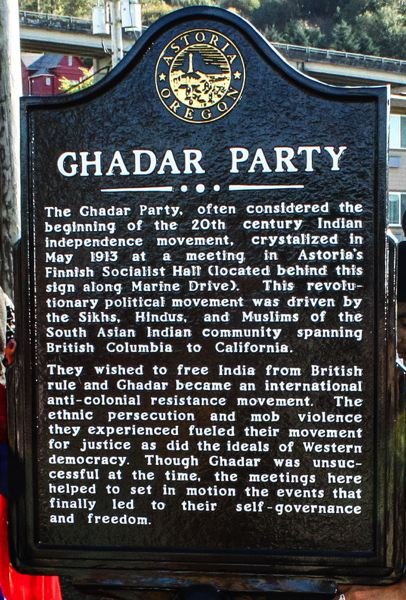
The Gadarites had a flame of liberty lit in their hearts, and did not hesitate to make any sacrifice for the cause of freedom, dignity and prosperity of their motherland. They fought valiantly for their cause; several Gadarites in India were imprisoned, many for life, and some were hanged. In the United States too, many Gadarites and Germans who supported Gadar activities, were prosecuted and some were incarcerated for varying terms of imprisonment. Although the movement did not achieve its stated objective, but it awakened the sleeping India and left a major impact on India’s struggle for freedom. The heroism, courage and sacrifices of the Gadarites inspired many freedom fighters to continue their mission.
A prominent Indian writer, Khushwant Singh, wrote in Illustrated Weekly, on February 26, 1961, “In the early months of World war I, an ambitious attempt to free their country was made by Indians living overseas, particularly in the United States and Canada. Although the overwhelming majority of the Gadrites were Sikhs and the centers of revolutionary activity were the Sikh temples in Canada, the United States, Shanghai, Hong Kong and Singapore, many of the leaders were of other parties and from different parts of India, Har Dayal, Ras Bihari Bose, Barkutullah, Seth Husain Rahim, Tarak Nath Das and Vishnu Ganesh Pingley. …… The Gadar was the first organized violent bid for freedom after the rising of 1857. Many hundreds paid the price with their lives.”
You may like
History
Snakes and Ladders, Originated in Ancient India called Mokshapat or Moksha Patamu
Published
4 years agoon
January 21, 2021By
Vedic Tribe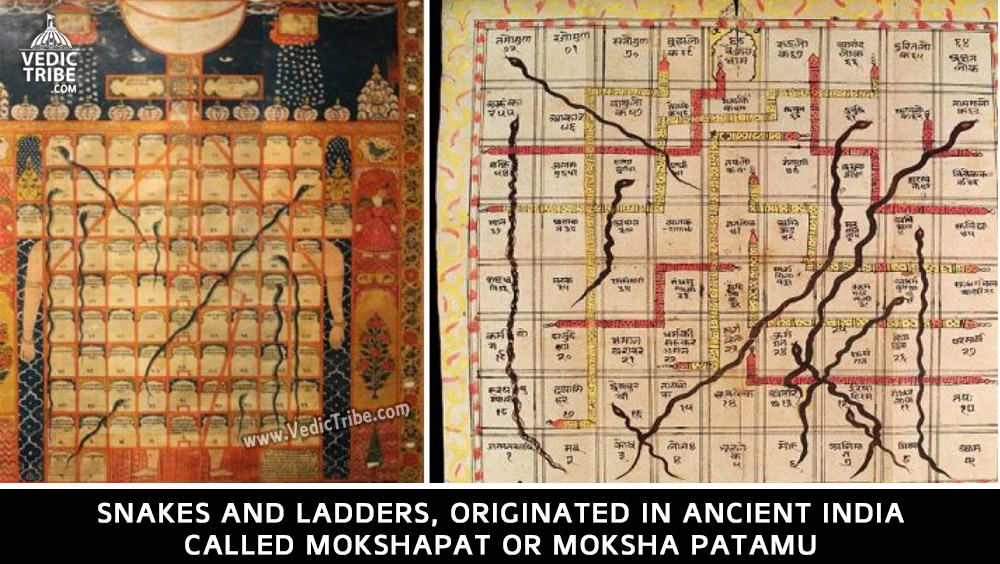
The board game, today called Snakes and Ladders, originated in ancient India, where it was known with the name Mokshapat or Moksha Patamu.
It’s not exactly known when or who invented it, though it’s believed the game was played at a time as early as 2nd century BC. According to some historians, the game was invented by Saint Gyandev.
Originally, the game was used as a part of moral instruction to children. The squares in which ladders start were each supposed to stand for a virtue, and those housing the head of a snake were supposed to stand for an evil. The snakes outnumbered the ladders in the original Hindu game. The game was transported to England by the colonial rulers in the latter part of the 19th century, with some modifications.
Through its several modifications over the decades, however, the meaning of the game has remained the same — ‘that good deeds will take people to heaven (Moksha) while evil deeds will lead to a cycle of rebirths in lower form of life (Patamu).
The modified game was named Snakes and Ladders and stripped of its moral and religious aspects and the number of ladders and snakes were equalized. In 1943, the game was introduced in the US under the name Chutes and Ladders.
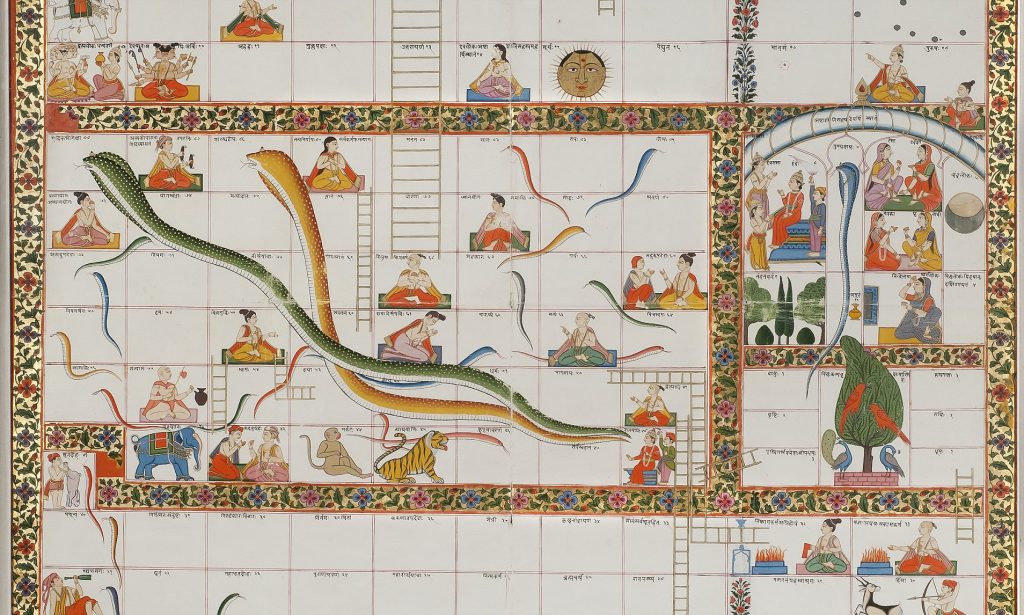
The Game of Knowledge
Originally, the game of Snakes and Ladders was known variously as Gyan Chaupar (meaning ‘Game of Knowledge), Mokshapat, and Moksha Patamu, and was originally a Hindu game. Nobody knows for sure as to who invented this game, or when it was created.
It may be said that whilst the gameplay of Gyan Chaupar is the same as today’s Snakes and Ladders, the board and higher objective of the game may be said to be quite different. Like the modern Snakes and Ladders board, the number of squares in that of Gyan Chaupar may vary. One version of this board, for instance, contains 72 squares, whilst another has 100. A major difference between the traditional and modern versions is the fact that in the former, a virtue or a vice and the effects of these virtues and vices, or something neutral is placed within each box.
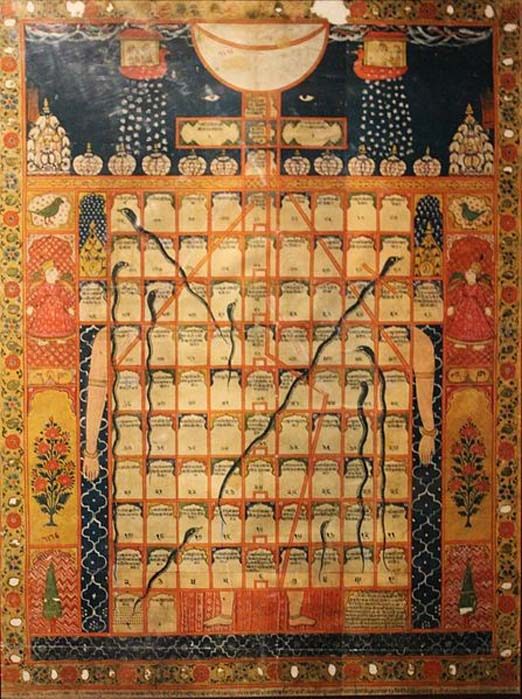
For instance, in an Indian Gyan Chaupar board of 72 boxes, squares number 24, 44, and 55 have the vices of bad company, false knowledge, and ego respectively. As the game places great emphasis on karma, the Hindu principle of cause and effect, each vice (the snakes’ heads) has a corresponding effect. Thus, for the vices mentioned above, the corresponding effects are conceit or vanity, plane of sensuality, and illusion. On the other hand, the virtues of purification, true faith, and conscience are contained in squares number 10, 28, and 46, and these lead to heavenly plane, plane of truth, and happiness respectively. In this version of the board, the goal is to reach box number 68, which is the plane of Shiva.
Religious Teaching Tool
This game was so popular that it was also adopted and adapted by other religions that existed in the Indian subcontinent. It is known that Jain, Buddhist, and Muslim adaptations of the game exist, as the concepts of cause and effect, and reward and punishment, are common to them. For devout followers of these religions, the game may be played as a form of meditation, as a communal exercise, and even as part of one’s religious studies without the use of more conventional books or sermons.
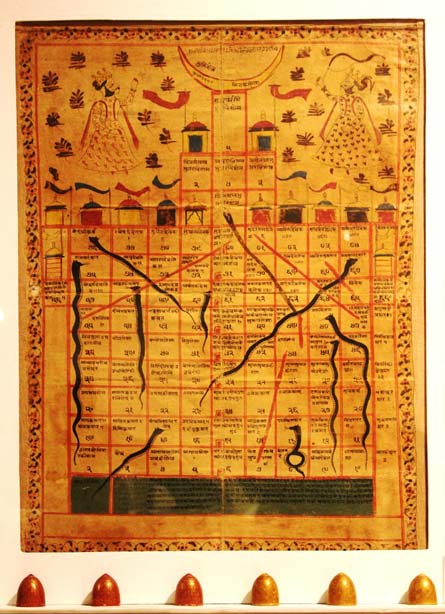
It may be added that many of the surviving game boards are works of art in their own right, as they contain elaborate illustrations of human figures, architecture, flora and fauna, etc. These boards were commonly made of painted cloth, and most of the extant ones date from after the middle of the18th century AD.
The Modern Game
The game of Gyan Chaupar became Snakes and Ladders towards the end of the 19 th century, when it was introduced to Great Britain by India’s colonial rulers. Whilst the original gameplay was maintained, its underlying philosophical message was greatly diminished. The religious virtues and vices were replaced by two-part cartoon dramas connected either by a snake or a ladder. Additionally, the number of snakes and ladders were equalized, whilst in the original ones, there were usually more snakes than ladders, which symbolizes the belief that it is far easier to fall prey to vice than to uphold virtue. From Great Britain, the game traveled to the United States, where it was introduced in 1943 by Milton Bradley as Chutes and Ladders.
Bharat
Telhara University – Older than Nalanda, Vikramshila Universities
Published
5 years agoon
December 29, 2020By
Vedic Tribe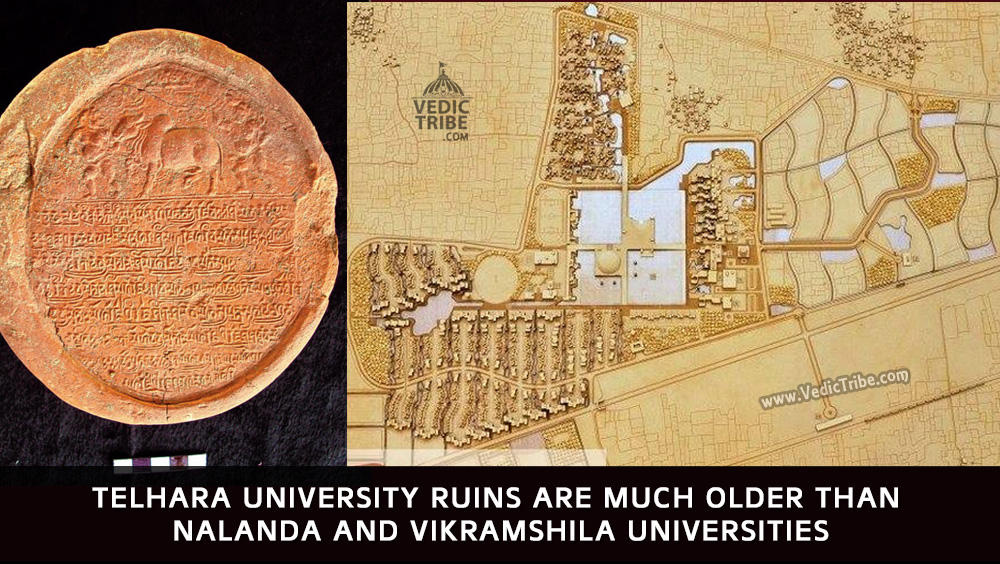
It was a useful mound, no doubt. A good vantage point where villagers occasionally relieved themselves.
But who would have thought that deep beneath its golden brown earth would be stories of dynasties and empires that now suggest that this — Telhara, a village 33 km from the ruins of the more famous Nalanda University — could be ‘Tilas-akiya’ or ‘Tiladhak’, the place Chinese traveler Hiuen Tsang visited and wrote about during his travels through India in 7th century AD? So far, there were only vague references but recent excavations at the mound suggest that Telhara was indeed an ancient university or seat of learning with seven monasteries.
The Bihar government has been calling the Telhara project one of its biggest after the excavations that unearthed Nalanda and Vikramshila universities. The excavation at Telhara should have happened earlier, say experts, but the site lost out to the more famous Nalanda.
The Telhara project that started on December 26, 2009, has so far come across over 1,000 priceless finds from 30-odd trenches — seals and sealing, red sandstone, black stone or blue basalt statues of Buddha and several Hindu deities, miniature bronze and terracotta stupas and statues and figurines that go back to the Gupta (320-550 AD) and Pala (750-1174 AD) empires. But the 2.6-acre mound has now thrown up the most tantalising find yet — evidence of a three-storied structure, prayer hall and a platform to seat over 1,000 monks or students of Mahayana Buddhism.
The terracotta monastery seals — a chakra flanked by two deers — unearthed at Telhara are similar to those at Nalanda, suggesting Telhara or Tiladhak was another great seat of learning besides Nalanda and Odantpuri during the Gupta and Pala reigns. It was the discovery of a similar monastery seal that clinched it for Nalanda University.
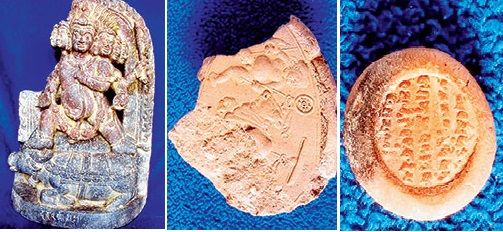
Former Archaeological Survey of India director B S Verma, who between 1971 and ’81 supervised the excavation at the site of the ancient Vikramshila university, says, “Telhara or Tiladhak has much more convincing epigraphical proofs — monastery inscriptions — than Vikramshila. The findings that match Hiuen Tsang’s account do more to convince that the place was a university or mahavihara similar to Nalanda.”
In his book, The Antiquarian Remains in Bihar, historian D R Patil writes about Hiuen Tsang’s description of Telhara. “Hiuen Tsang describes Telhara or Tilas-akiya as containing a number of monasteries or viharas, about seven in number, accommodating about 1,000 monks studying in Mahayan. These buildings, he says, had courtyards, three-storied pavilions, towers, gates and were crowned by cupolas with hanging bells. The doors and windows, pillars and beams have bas relieves (sculptures in guilded copper). In the middle vihara is a statue of Tara Bodhisatva and to the right (is) one of Avlokiteshwar”.
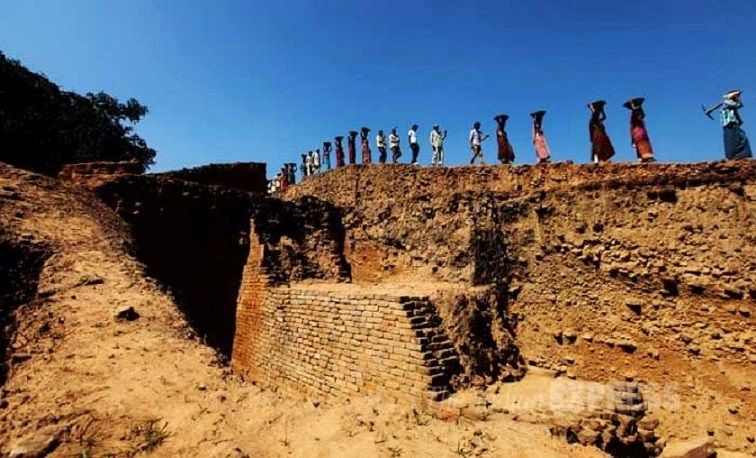
Other history books too talk of Tiladhak monastery, on the western side of Nalanda, as having four big halls and three staircases. It is said the mahavihara or university was built by one of the descendants of Magadha ruler Bimbisara. The monastery was decorated with copper and also had small copper bells that gently chimed in the breeze.
For months now, the excavation has been unearthing these stories. Apart from the mound that is now being dug up, Telhara has six other mounds — five of which have settlements and one which is partially elevated.
Atul Kumar Verma, director (archaeology) of the Bihar government’s Department of Art and Culture, says, “Since the excavations suggest that Telhara might have been a contemporary of Nalanda, it is quite possible that it was either an independent university for specialized education or that students graduating from Nalanda University would come here for specialized study. It is a great feeling to see the place emerging as the next big find after Nalanda. It has also aroused great curiosity and attracted even the likes of Nobel laureate Amartya Sen.” Sen wrote in the visitors’ book: “What a wonderful site, really thrilling! And so skillfully excavated and restored.”
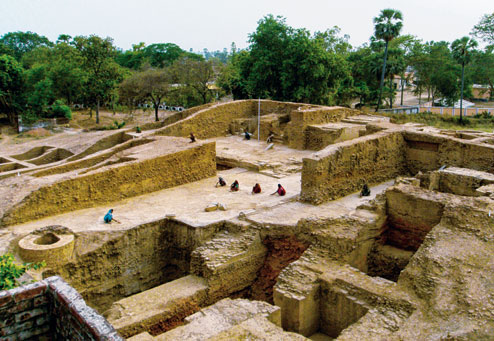
“We have found the courtyard that might have been an extension of the platform Hiuen Tsang had described,” Nand Gopal, camp in-charge at the Telhara site, says, peering into his optical line meter that’s mounted on a tripod.
In more recent times, it was A M Broadley, then magistrate of Nalanda, who in 1872 wrote about “Tilas-akiya” as a university and site of learning. British army officer and archaeologist Sir Alexander Cunningham, who visited the place between 1872 and 1878, wrote about inscriptions describing “Teliyadhak” as a place that had seven monasteries and which matched Hiuen Tsang’s account. A statue of the 12-armed Avlokiteshwar Buddha found from a Tiladhak site is at the Indian Museum in Kolkata. Perhaps the best known Pala sculpture from Telhara is now in Rietberg Muzeum, Zurich.
Though there was this and more proof that Telhara could be sitting on a glorious past, it wasn’t until December 2009 that the excavations finally began. Telhara panchayat head Awadhesh Gupta claims to have been the one who got things started.
“We all knew Telhara was once a great seat of learning, but nobody did anything to prove it. In 1995, I approached the Congress government requesting that the place be excavated but got no assurance. When Bihar Chief Minister Nitish Kumar visited the site in 2007, I put up this demand once again. The villagers were not happy with me. They thought I should have demanded something more concrete than just the digging of a mound.”
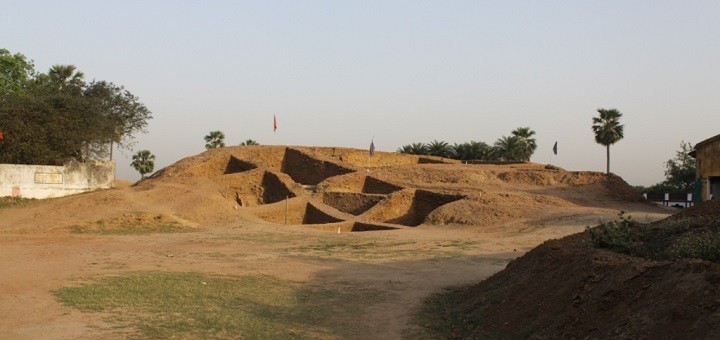
But the mukhiya may have had the last laugh. Villagers now talk about Telhara being part of the Nalanda-Rajgir circuit and how that could bring them jobs and better opportunities. “We hope the site is conserved and clubbed with Nalanda to attract tourists. The site has already given temporary jobs to 70 villagers,” says Anil Kumar, a villager.
It was a useful mound, no doubt.
Experts associated with its excavation are now claiming that the university originated in the Kushan period.
Atul Kumar Verma said that in the recent excavation, archaeologists have found some bricks of very large size (42x36x6.5cm) substantiating that the university belonged to the Kushan period. “Bricks of the Kushan period were quite large from other dynasties, including the Gupta and Pala periods,” said Verma.
While the Kushan period is considered to be 1st century AD, the Gupta dynasty ruled from 3rd to 6th century AD.
MAJOR FINDINGS
SEALS AND SEALING
The recovery of over 100 terracotta seals and sealings from the Gupta and Pala periods provides strong evidence of this being a Buddhist university. Besides seals of the chakra flanked by two deers, other seals have inscription of Buddhist mantras. Seals of Gaj-Lakshmi and flying birds were also found. Some inscriptions that have not yet been deciphered would be sent to Mysore for deciphering.
PLATFORM, TEMPLES
Just above the ashen layer — said to be proof of Turkish general Bakhtiyar Khilji having destroyed the monastery — is the sanctum sanctorum of three Buddhist shrines, each measuring 3.15 square metres. A big platform, found just below this ashen layer, is said to have accommodated over 1,000 monks.
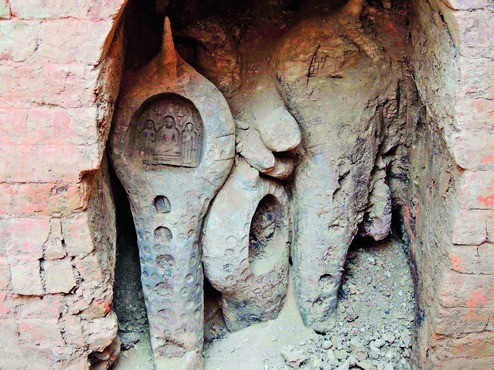
CELLS FOR TEACHERS
The excavation has so far revealed 11 cells of 4 square meters each. It is believed that these were faculty quarters. There is evidence of bricks from the Gupta and Pala periods.
COPPER BELL CHIMES
The excavation revealed several broken pieces of small bells. Parts of molten copper also suggest that the monastery was well-decorated.
CAUTION INSCRIPTION
A stone inscription in Sanskrit (early Nagari script), probably written just before the destruction of the Tiladhak mahavihara, says, “He who tries to destroy this monastery is either a donkey or a bull”. Below the stone inscription are images of the two animals.
FASTING BUDDHA AND VOTIVE STUPA
A miniature terracotta image of a fasting Buddha from the Pala period is a rare find. A six-foot-tall votive stupa from the Pala period suggests the prevalence of Buddhism.
MAURYAN PERIOD
Bone tools and pottery shards of Northern Black Polished Ware points to this being a settlement in the Mauryan period.
STONE SCULPTURES
Among the over 15 stone sculptures found at the site are a red sandstone sculpture of Bodhisatva, Avlokiteshwar, Manjusri and the Buddha in his ‘earth witness’ mudra. A black stone statue of Buddha in abhay mudra (fearless mode) from the Pala period has been found. The red sandstone Bodhisatva sculpture is believed to be from the Gupta period. Some sculptures of Hindu deities such as Uma Maheshwar and Ganesh and Vishnu from the later Pala period were also found. The presence of a Yamantaka sculpture is evidence of Tantric Buddhism at the monastery.
History
India’s first Islamic Mausoleum Was Built on Top of Ancient Hindu Temple
Published
5 years agoon
December 28, 2020By
Vedic Tribe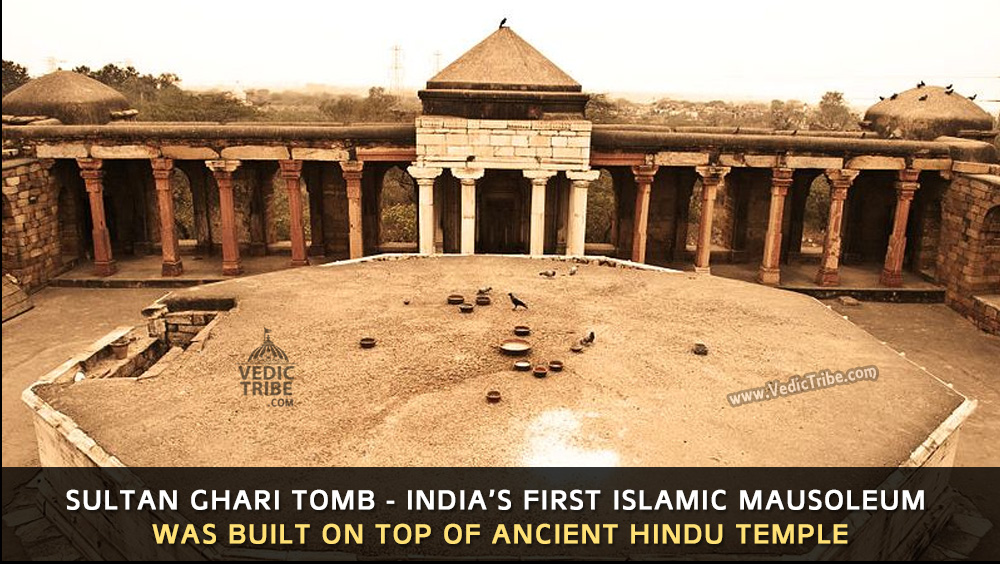
About 6 km west of Qutab Minar in Delhi, there lies a tomb called Sultan Ghari which is believed to be the final resting place of Prince Nasir’ud-Din Mahmud, the uncrowned eldest son of Sultan Shamsuddin Iltutmish of the Slave Dynasty built in 1231 AD. It was the first Islamic Mausoleum built in India.
However, engraved symbols of animals, Shiva Linga and the Sanskrit inscriptions on ceiling tell a different tale altogether. The beams of the octagonal crypt bear figures of Kamadhenu, the celestial cow and Varaha, the wild boar reincarnation of Lord Vishnu. These two animals were a royal Hindu insignia and considering the ideology of Islam against idols and the immense hatred towards pigs, it is very unlikely that such statues would adorn the inside of a Muslim tomb.
![]()
Iltutmish invaded eastern part of India in 1225 AD which resulted in signing of a treaty between him and Iwaz Khalji, the ruler of Eastern India. After a few successive battles, Prince Nasiru’d-Din Mahmud was appointed governor of Lakhnauti province who later merged the province of Oudh with Bengal and Bihar, gaining him the title of “Malik-us-Sharq” (King of the East) by his father.
The Prince was killed in 1229 AD after a very short rule of 18 months. Grieved by the death of his favourite son, Iltutmish commissioned the Sultan Ghari Tomb. After Iltutmish’s death in 1236, his daughter, Razia Sultana ruled the kingdom until her defeat and death in 1240 AD.
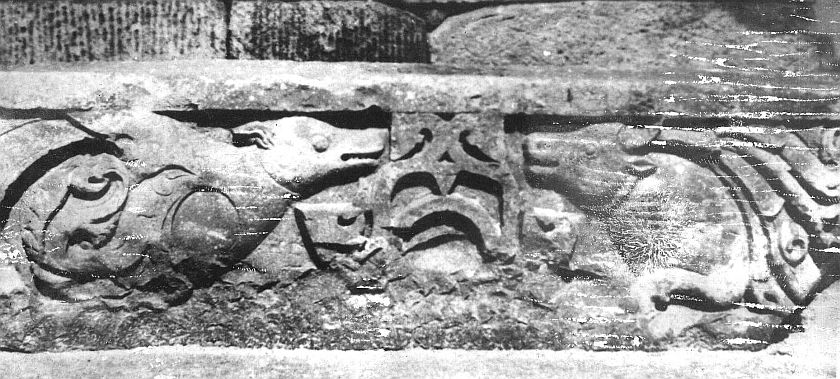
While ASI is pretty much silent on this matter, historians and archaeologists justify these carvings as new buildings being fashioned out of the debris of some Hindu buildings or that the workmen may have been Hindus and would have built the tomb in Hindu style. Their arguments in favor of the tomb fail here because no building worth its name can be build out of old debris and no workman would even dare to fashion a building for which he is hired according to his taste rather than that of the owner’s.
The building is also of an octagonal shape which is another Hindu specialty.
Due to indifference or perhaps purposeful negligence by the government and ASI, we may never know the reality and history of this ancient Hindu temple.

Follow us on Facebook
Follow us on Twitter
Latest


Seven Vows and Steps (pheras) of Hindu Wedding explained
Views: 7,633 Indian marriages are well renowned around the world for all the rituals and events forming part of the...


Sari or Saree is symbol of Indian feminism and culture
Views: 6,462 One of the most sensual attires of a woman in India is undoubtedly the sari. It is a...


Atithi Devo Bhava meaning in Hinduism and India
Views: 5,804 Atithi Devo Bhava, an ancient line taken from the Hindu scriptures and was originally coined to depict a visiting person whose...


Sanskrit Is More Than Just A Method To Communicate
Views: 4,702 -By Ojaswita Krishnaa Chaturvedi anskrit is the language of ancient India, the earliest compilation of sound, syllables and...


Significance of Baisakhi / Vaisakhi
Views: 5,852 Baiskhi is also spelled ‘Vaisakhi’, and is a vibrant Festival considered to be an extremely important festival in...


Navaratri: The Nine Divine Nights of Maa Durga!
Views: 6,879 – Shri Gyan Rajhans Navratri or the nine holy days are auspicious days of the lunar calendar according...


History of Vastu Shastra
Views: 9,498 Vastu Shastra (or short just Vastu) is the Indian science of space and architecture and how we may...


Significance of Bilva Leaf – Why is it dear to Lord shiva?
Views: 9,068 – Arun Gopinath Hindus believe that the knowledge of medicinal plants is older than history itself, that it...


Concept of Time and Creation (‘Brahma Srishti’) in Padma Purana
Views: 9,480 Pulastya Maha Muni affirmed to Bhishma that Brahma was Narayana Himself and that in reality he was Eternal....


Karma Yoga – Yog Through Selfless Actions
Views: 8,745 Karma Yoga is Meditation in Action: “Karma” means action and “yoga” means loving unity of our mind with...


